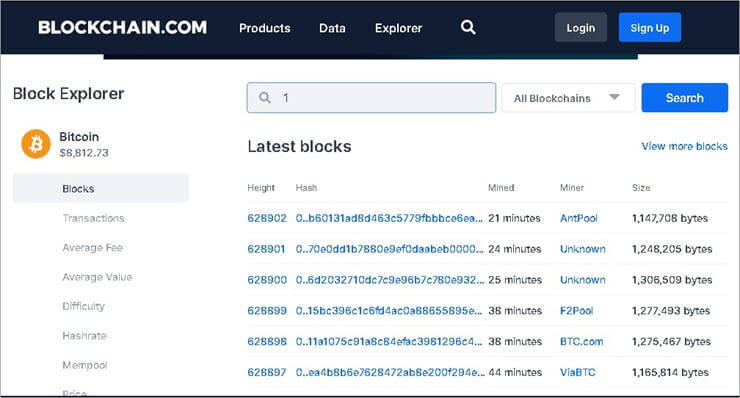How to check crypto transaction?

Cryptocurrency transactions are the transfer of digital assets from one wallet to another using the blockchain technology. With the rise in popularity of cryptocurrencies, it has become increasingly important to check these transactions to ensure their accuracy and authenticity. Checking transactions also helps in detecting and avoiding potential errors, fraud, and other security issues. The purpose of this article is to guide individuals on how to check their cryptocurrency transactions effectively. In this article, we will cover the basics of setting up a cryptocurrency wallet, understanding transaction details, and troubleshooting common issues that may arise. By the end of this article, you should have a clear understanding of the steps involved in checking a cryptocurrency transaction and ensuring its safety and security.
Setting up a cryptocurrency wallet
The first step in checking a cryptocurrency transaction is to have a cryptocurrency wallet. A wallet is essentially a digital storage space for your cryptocurrency assets. When choosing a wallet, it is important to consider factors such as security, user experience, and compatibility with your preferred cryptocurrency. Some popular wallet options include hardware wallets, software wallets, and exchange wallets.
Once you have chosen a wallet, the next step is to create an account. This process involves providing your personal details and setting up a unique password. It is important to keep your password safe and secure, as it gives access to your cryptocurrency assets.
The final step in setting up a cryptocurrency wallet is to add funds. This can be done by purchasing cryptocurrencies on a cryptocurrency exchange or through a peer-to-peer transaction. Once the funds have been added, you will be able to see your balance reflected in the wallet.
In summary, setting up a cryptocurrency wallet involves choosing a wallet, creating a wallet account, and adding funds to the wallet. By following these steps, you will be ready to check your cryptocurrency transactions and ensure their accuracy and security.
Checking transactions
When dealing with cryptocurrency transactions, it is important to be proactive and monitor the status of your transactions to ensure their accuracy and security. In this section, we will discuss the key steps involved in checking a cryptocurrency transaction, including locating the transaction history, understanding transaction details, and verifying transaction authenticity. By following these steps, you can gain peace of mind and confidence in the security of your cryptocurrency assets.
Once you have a cryptocurrency wallet set up, you can access your transaction history. This can typically be done by logging into your wallet account and accessing the “Transactions” or “History” section. Here, you will be able to see a record of all your past transactions, including the date, amount, and status of each transaction.
In order to check a cryptocurrency transaction effectively, it is important to understand the details of the transaction. This includes the date and time of the transaction, the amount, the cryptocurrency type, and the addresses of the sender and recipient. You should also check that the transaction has been processed and confirmed on the blockchain.
To verify the authenticity of a cryptocurrency transaction, you can compare the details of the transaction in your wallet to the information on the blockchain. This will help you to confirm that the transaction is valid and has not been tampered with. Additionally, you can also use blockchain explorer tools to view the transaction on the blockchain and check its status.
Сhecking a cryptocurrency transaction involves locating the transaction history, understanding transaction details, and verifying transaction authenticity. By following these steps, you can ensure the accuracy and security of your cryptocurrency transactions.
Common problems with transactions
Cryptocurrency transactions can sometimes encounter issues that can prevent them from being processed as expected. Understanding these common problems can help you troubleshoot and resolve issues with your transactions.
An unconfirmed transaction occurs when a transaction has not yet been processed and confirmed on the blockchain. This can happen due to network congestion or a low transaction fee. To resolve this issue, you can either wait for the network to clear or increase the transaction fee.
An incorrect recipient address can occur when the wrong address is entered during a transaction. This can result in the loss of funds as the transaction cannot be reversed. To avoid this issue, double-check the recipient address before confirming a transaction.
A stuck transaction occurs when a transaction remains in an unconfirmed state for an extended period of time. This can happen due to a variety of reasons, including network congestion, low transaction fees, or a technical issue with the wallet. To resolve a stuck transaction, you can either wait for the network to clear, increase the transaction fee, or use a transaction accelerator service.
Сommon problems with cryptocurrency transactions include unconfirmed transactions, incorrect recipient addresses, and stuck transactions. By understanding these issues and taking the necessary steps to resolve them, you can ensure the smooth and secure processing of your cryptocurrency transactions.
Troubleshooting and resolving transaction issues
When dealing with cryptocurrency transactions, it is important to be prepared for potential issues that may arise. In this section, we will discuss the key steps involved in troubleshooting and resolving transaction issues.
- Network congestion can often be the cause of transaction issues. You can check the network congestion on the blockchain or through a blockchain explorer tool to determine if this is the cause of your transaction issue.
- If a transaction is stuck or unconfirmed, you may be able to resolve the issue by re-sending the transaction. This can be done by creating a new transaction with an increased transaction fee.
- If you are unable to resolve a transaction issue on your own, you may need to contact the support team for your wallet. They will be able to assist you with resolving the issue and answer any questions you may have.
Troubleshooting and resolving transaction issues can be done by checking the network congestion, re-sending the transaction, or contacting the wallet support. By taking these steps, you can ensure the timely and secure processing of your cryptocurrency transactions.
How to check crypto transaction: Conclusion
In this article, we have discussed the steps involved in checking a cryptocurrency transaction. This includes setting up a cryptocurrency wallet, locating the transaction history, understanding transaction details, verifying transaction authenticity, and resolving any common issues that may arise.
When dealing with cryptocurrency transactions, it is important to keep security in mind. This includes keeping your private keys safe, double-checking recipient addresses, and using strong passwords. By following these safety tips, you can protect your cryptocurrency assets and ensure secure transactions.
In conclusion, checking cryptocurrency transactions is an important part of responsible cryptocurrency management. By following the steps outlined in this article and being vigilant about security, you can ensure the accuracy and security of your transactions. It is also recommended to educate yourself about the cryptocurrency ecosystem, stay up-to-date with the latest developments, and seek advice from financial experts if necessary.
Hi, I'm Benito Hearne. I'm 51 years old and a P2E expert. I used to play cybersports professionally, but now I'm retired (for the most part). These days, I mostly just enjoy spending time with my family and tinkering with gadgets in my workshop.


